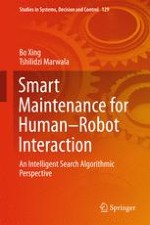2018 | OriginalPaper | Buchkapitel
12. Human Capacity—Exposome Perspective
verfasst von : Bo Xing, Tshilidzi Marwala
Erschienen in: Smart Maintenance for Human–Robot Interaction
Aktivieren Sie unsere intelligente Suche, um passende Fachinhalte oder Patente zu finden.
Wählen Sie Textabschnitte aus um mit Künstlicher Intelligenz passenden Patente zu finden. powered by
Markieren Sie Textabschnitte, um KI-gestützt weitere passende Inhalte zu finden. powered by
